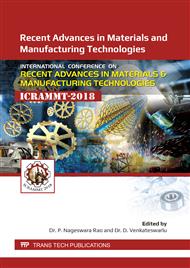p.807
p.813
p.819
p.828
p.834
p.839
p.846
p.852
p.858
Effect of Welding Speed on the Microstructure and Corrosion Properties of Weld and Heat Affected Zones in GTA Welded AA2014 Alloy
Abstract:
The microstructure and corrosion properties of weld fusion zone and the heat affected zones of gas tungsten arc (GTA) welded AA2014 alloy, welded at varying speeds of 1.5mm/s, 2.5 mm/s and 3.5 mm/s were examined for gaining knowledge on the effect of welding speed on corrosion behavior at localized regions of the weldment. The macrostructure and microstructure of the welds were evaluated with optical microscope. The corrosion properties were examined with potentiodynamic polarization in aqueous 3.5% NaCl solution. The GTA welding has resulted in grain refinement fusion zone and dispersion of coarse Al2Cu phases within the grains and along the grain boundaries of heat affected zones. With increase in welding speed the grain size of AA2014 at the fusion zone reduces significantly and also the corrosion resistance of the fusion zone and heat affected zone could decrease as it shows higher negative corrosion potential.
Info:
Periodical:
Pages:
834-838
Citation:
Online since:
August 2019
Authors:
Price:
Сopyright:
© 2019 Trans Tech Publications Ltd. All Rights Reserved
Share:
Citation:


